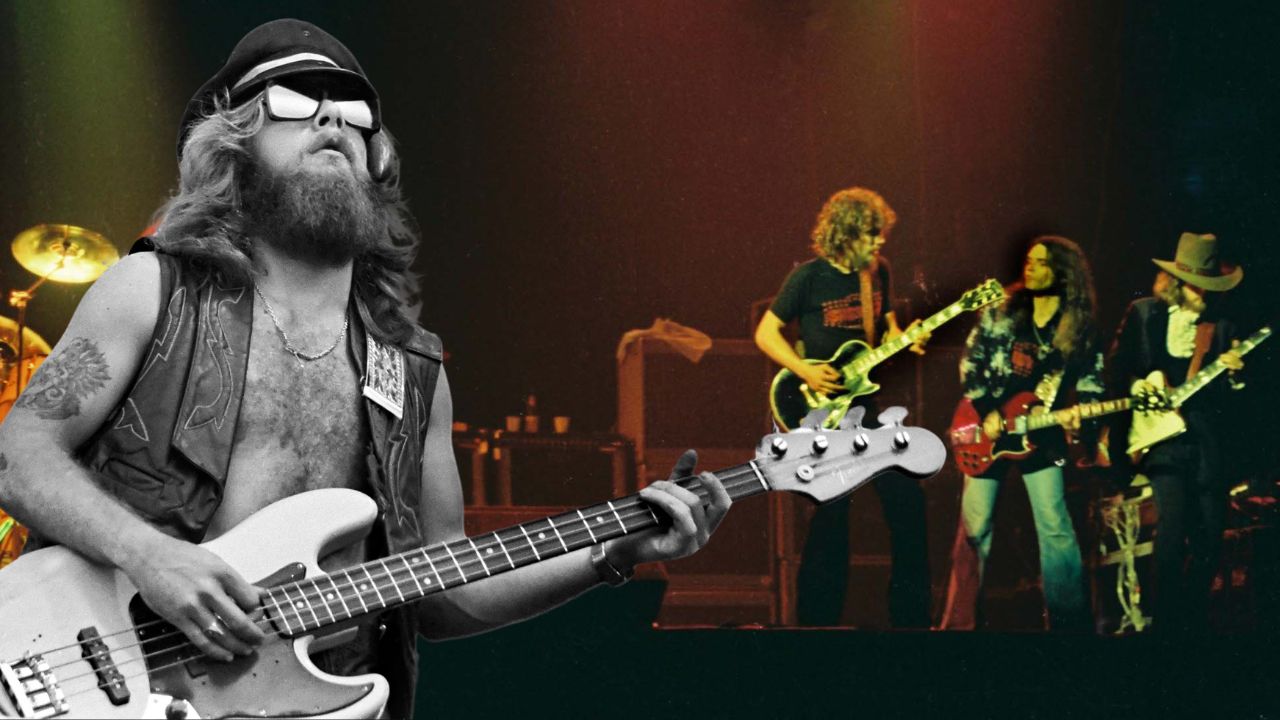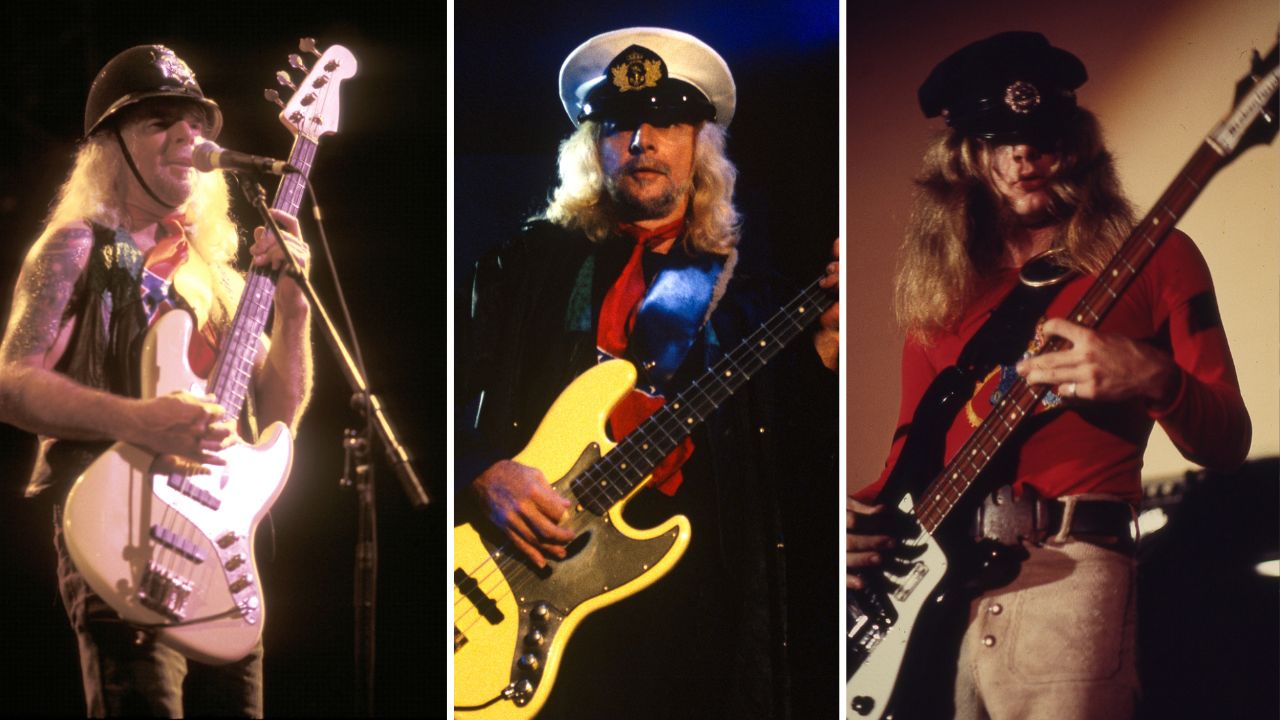“I don’t think Leon knew where any of the bass notes were. He played totally by instinct, and his instincts were usually right”: Lynyrd Skynyrd’s Leon Wilkeson was the ‘Mad Hatter’ of bass – as evidenced by his bassline on What’s Your Name
Lynyrd Skynyrd icon Ed King pays tribute to bassist Leon Wilkeson

It’s virtually impossible to write about Southern rock legends Lynyrd Skynyrd without mentioning the plane crash that decimated the band at its creative peak in October 1977, killing, among others, frontman Ronnie Van Zant and guitarist Steve Gaines.
The group was just four dates into a massive tour in support of its album Street Survivors, released just three days earlier, when the small chartered plane crashed into a Mississippi forest after running out of fuel.
“It was like the sound of a billion baseball bats beating the side of the plane as it went down through the trees,” bassist Leon Wilkeson told journalist Bruce Pilato in 1996.
Rhode Island-born, Florida-raised Wilkeson – affectionately dubbed ‘Mad Hatter’ due to his fondness for wearing outlandish headgear on stage – first picked up the bass guitar as a teenager and began developing a solid but highly mobile style that calls to mind Jack Bruce and Paul McCartney.

After doing the rounds with a number of local bands, Wilkeson joined Skynyrd in 1971, but quit the following year, fearing a rock 'n' roll lifestyle was out of keeping with his Christian faith.
To cover bass guitar duties, Van Zant tapped acquaintance Ed King, formerly of the band Strawberry Alarm Clock. Upon the completion of Skynyrd's 1973 debut album, Pronounced Leh-Nerd Skin-Nerd, Wilkeson was persuaded to rejoin the band, and King switched to guitar.
King – who wrote the music for Sweet Home Alabama during the new lineup's first rehearsal – told Bass Player, “Leon played bass more like a guitar player than a bass player: much of what he put together is counterpoint to the guitar parts, whereas I play a standard foundation bass.”
Get The Pick Newsletter
All the latest guitar news, interviews, lessons, reviews, deals and more, direct to your inbox!
King left the band in 1975 and was replaced by Gaines, who inspired some of Skynyrd's strongest material, including Street Survivors.
Wilkeson, who died in 2001 at age 49, favored Gibson Thunderbirds and Fender Jazz Basses, making it likely that one, or both, figured on Street Survivors. According to the January 1978 issue of Modern Recording magazine, for the Street Survivors sessions Wilkeson used a Peavey F-800B amp and an 8x10 Altec cabinet miked with an Electro-Voice RE-20, and also recorded direct.
The album opens with What's Your Name, a vibrant swirl of bluesy guitar riffs, honky-tonk piano, country-tinged vocals, and expertly placed horn flourishes. Built around a 12-bar verse and an eight-bar chorus, pick-player Leon Wilkeson lays down bluesy Chuck Berry-inspired basslines – usually in tandem with one of the guitars – that accentuate the 5th and 6th degrees of the principal chords.
Throughout, the chord changes tend to fall on traditionally weak beats, in particular the final eighth-note of the bar, thus anticipating the downbeat and giving the song a strong sense of impetus.
Following another verse, the eight-bar chorus section is doubled in length, helping to build tension before the guitar solo. Check out the subtle sidestep to and from the F#m chord, which Wilkeson accentuates with strong root-5 reinforcement.
Also worthy of note is Wilkeson's single departure from his predetermined patterns, as he fires off a flowing, rising line that features dextrous slides leading back into the chorus. Final recaps of the verse and chorus guide the song to its climax, where Wilkeson joins the guitars for the concluding bluesy phrase.
King also advises checking out several other key Wilkeson tracks: “Listen to That Smell – there's some incredible genius going on there. Also, his take on the chorus of Saturday Night Special is one I would never have come up with.”
Witness also Wilkeson's bold walking lines on Whiskey Rock-a-Roller or his Chuck Rainey-like double-stops and inventive, nimble fingerwork on You Got That Right.
“I don't think Leon knew where any of the notes were,” King says. “He played totally by instinct, and his instincts were usually right. His bass parts were seamless. Like a great catcher on a baseball team, you never really noticed he was there, but when you listened to just his part, the genius of his playing came through big time.”
Fittingly, his bandmates dedicated a bass-heavy song to him titled Mad Hatter on the 2003 album Vicious Cycle. Skynyrd icon King pays his own personal tribute to Wilkeson, saying, “These days whenever I put together a song idea, I ask myself, ‘What would Leon play?’”
Chris Jisi was Contributing Editor, Senior Contributing Editor, and Editor In Chief on Bass Player 1989-2018. He is the author of Brave New Bass, a compilation of interviews with bass players like Marcus Miller, Flea, Will Lee, Tony Levin, Jeff Berlin, Les Claypool and more, and The Fretless Bass, with insight from over 25 masters including Tony Levin, Marcus Miller, Gary Willis, Richard Bona, Jimmy Haslip, and Percy Jones.
“I asked him to get me four bass strings because I only had a $29 guitar from Sears”: Bootsy Collins is one of the all-time bass greats, but he started out on guitar. Here’s the sole reason why he switched
“I got that bass for $50 off this coke dealer. I don’t know what Jaco did to it, but he totally messed up the insides!” How Cro-Mags’ Harley Flanagan went from buying a Jaco Pastorius bass on the street to fronting one of hardcore’s most influential bands



![A black-and-white action shot of Sergeant Thunderhoof perform live: [from left] Mark Sayer, Dan Flitcroft, Jim Camp and Josh Gallop](https://cdn.mos.cms.futurecdn.net/am3UhJbsxAE239XRRZ8zC8.jpg)








